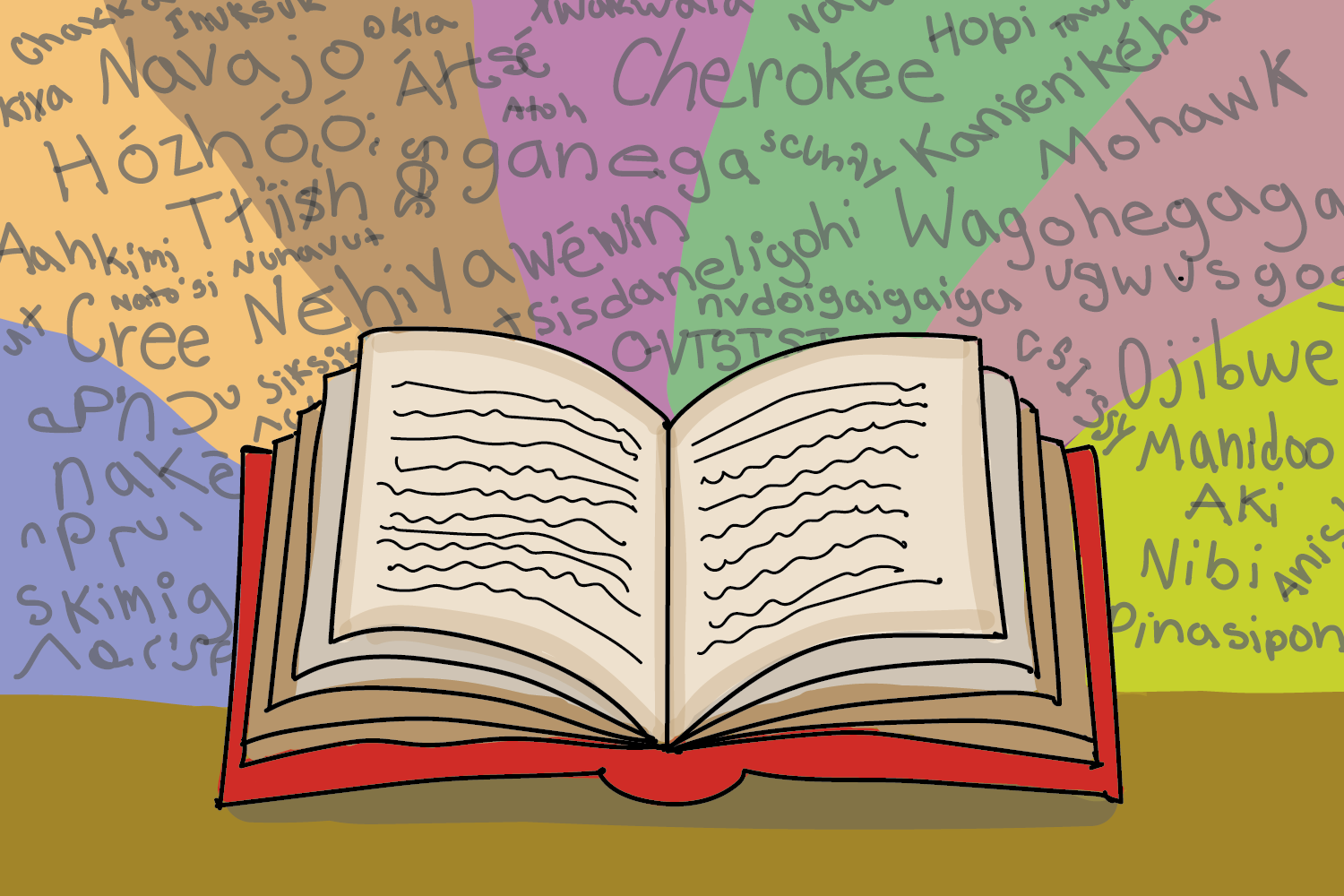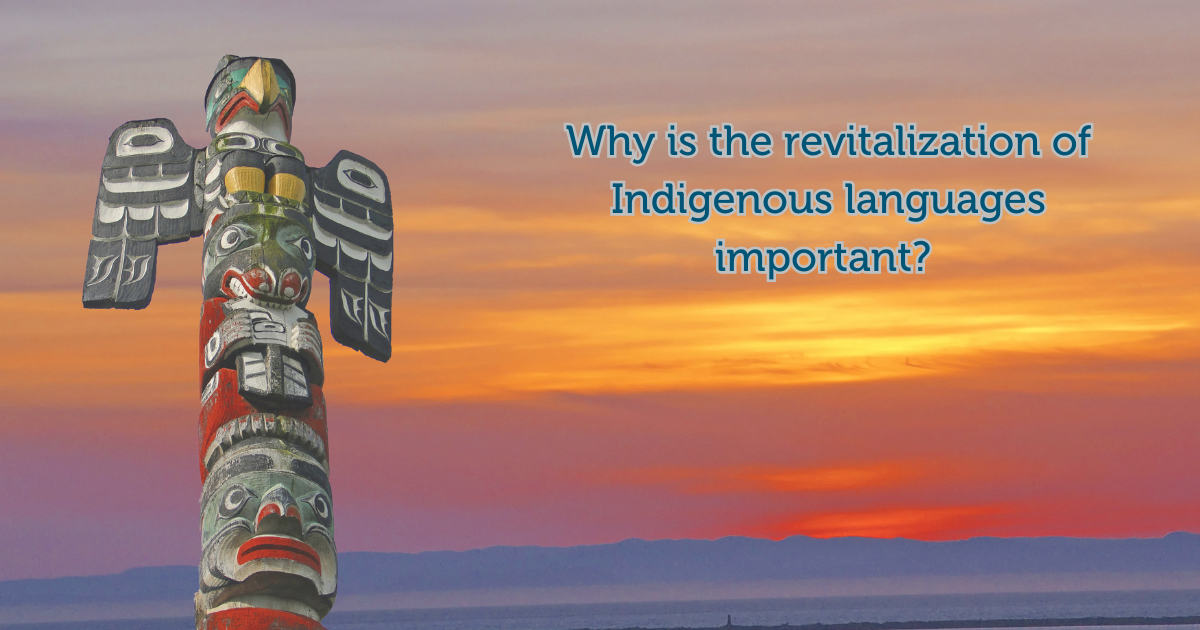
Whispers of Resilience: The Vital Quest to Revitalize Native American Languages
By [Your Name/Journalist’s Name]
In the quiet corners of the United States and Canada, a profound battle is being waged – not with weapons, but with words. It is a struggle against time, against historical trauma, and against the forces that have silenced indigenous voices for centuries. This is the fight for Native American language revitalization, a movement that seeks to breathe new life into tongues once vibrant, now teetering on the brink of extinction. More than just preserving vocabulary and grammar, this endeavor is about reclaiming identity, sovereignty, and the unique worldviews embedded within each ancestral utterance.

The statistics are stark, a testament to a brutal past. Before European contact, North America was a symphony of over 300 distinct indigenous languages. Today, that number has dwindled to approximately 175, and of these, fewer than 20 are still being learned by children in the home. The vast majority are spoken primarily by elders, a generation often referred to as "the last fluent speakers," whose passing marks an irreversible loss of knowledge, history, and cultural understanding.
A Legacy of Silence: The Roots of Decline
The precipitous decline of Native American languages is not a natural phenomenon, but a direct consequence of colonization, forced assimilation, and systematic suppression. From the Indian Removal Act of the 19th century to the infamous boarding school era, U.S. government policies actively sought to "kill the Indian, save the man" – a horrifying directive that often began with stripping children of their native languages.
"We were beaten if we spoke our language," recounts Elsie M. Allen, a Pomo elder, whose words echo the painful experiences of countless others forced into institutions like the Carlisle Indian Industrial School. Children were punished, shamed, and sometimes physically abused for speaking their mother tongues, creating generations for whom the language became associated with trauma and silence. This intergenerational trauma continues to ripple through communities, making the journey of revitalization not just an academic pursuit, but a profound healing process.
As a result, many Native American languages became "sleeping languages" – no longer spoken fluently by anyone, but documented in archives, recordings, and historical texts. Others became "critically endangered," with only a handful of elderly speakers remaining. The urgency of the situation is palpable, driving communities to act before their linguistic heritage vanishes entirely.
What is Native American Language Revitalization?
At its core, Native American language revitalization is the deliberate, organized effort by indigenous communities to halt the decline of their languages and increase the number of fluent speakers. It is a multifaceted, community-driven process that recognizes language as the cornerstone of cultural identity, spiritual connection, and self-determination.
"Our language isn’t just words; it’s the DNA of our culture," explains Dr. Richard Littlebear (Cheyenne), a prominent language advocate. "It carries our ceremonies, our stories, our humor, our way of seeing the world. If we lose it, we lose a part of who we are, forever."

The approaches to revitalization are diverse, tailored to the unique needs and resources of each nation, but common strategies include:
-
Immersion Schools and Programs: Considered the "gold standard" by many, these programs immerse children from preschool through high school in their ancestral language, learning all subjects (math, science, history) in the indigenous tongue. The Hawaiian language revitalization movement, which began in the 1980s with the establishment of Pūnana Leo (language nests) preschools, is a shining example of success. From near extinction, Hawaiian now boasts thousands of speakers, and graduates of these programs are becoming the next generation of teachers and fluent speakers.
-
Master-Apprentice Programs: This model pairs a fluent elder (the master) with a dedicated learner (the apprentice) for intensive, one-on-one language immersion in daily life. The goal is for the apprentice to achieve conversational fluency, acting as a crucial bridge for intergenerational transfer. This method is particularly effective for highly endangered languages with very few remaining speakers.
-
Technology and Digital Resources: From online dictionaries and language apps to social media groups and YouTube channels, technology is playing an increasingly vital role. The Cherokee Nation, for instance, has developed an iOS app for learning the Cherokee syllabary and phrases, making the language accessible to a global audience. Podcasts, virtual reality experiences, and interactive games are also being utilized to engage younger generations.
-
Community Classes and Camps: Many tribes offer evening classes for adults, summer language camps for youth, and weekend workshops. These initiatives foster a sense of community around the language, allowing learners of all ages to practice and connect.
-
Documentation and Archiving: Linguists and community members work together to record elders, create dictionaries, grammars, and curriculum materials. This vital work ensures that even if a language goes silent, the blueprint for its potential reawakening exists.
Challenges on the Path to Reawakening
Despite the dedication and innovative approaches, the path to language revitalization is fraught with challenges:
- Urgency and Loss of Elders: The most pressing issue is the rapid loss of the last fluent elders. Each passing elder represents an irreplaceable library of knowledge.
- Funding and Resources: Revitalization efforts are often underfunded, relying on grants, tribal budgets, and volunteer efforts. Sustained, long-term funding is critical for building enduring programs.
- Intergenerational Trauma: The historical trauma associated with language loss can make some hesitant to relearn, or create barriers to consistent engagement. Healing and cultural pride are essential components of the process.
- Creating New Speakers: While many programs teach adults, the ultimate goal is to create new first-language speakers – children who grow up speaking the language fluently at home. This requires a critical mass of fluent parents and a supportive linguistic environment.
- Standardization vs. Variation: Many languages have regional dialects. Deciding on a standardized form for teaching can be a complex and sensitive issue.
Success Stories and the Promise of the Future
Despite the obstacles, there are inspiring stories of resilience and resurgence. The Navajo language (Diné Bizaad), with an estimated 170,000 speakers, is one of the most robust indigenous languages in North America, with active immersion schools and a strong cultural presence. The Oneida Nation of Wisconsin has a thriving language program, and the Wampanoag language, once considered "extinct," has been brought back to life through the dedicated efforts of community members like Jessie Little Doe Baird, who used historical documents to reconstruct the language. Her work, which led to the first Wampanoag children in over a century speaking the language fluently, earned her a MacArthur "genius" grant.
These successes underscore a crucial truth: language revitalization is not merely about preserving the past; it is about building a vibrant future. When a language is revitalized, it strengthens cultural identity, promotes self-esteem, and empowers indigenous communities to exercise greater sovereignty over their education, health, and governance. Research has shown that indigenous youth who are connected to their language and culture have better educational outcomes, lower rates of substance abuse, and higher levels of self-worth.
"When I speak my language, I feel connected to my ancestors, to this land, and to who I truly am," says a young student from a Lakota immersion school. "It’s not just my ancestors’ language; it’s my future."
The movement to revitalize Native American languages is a testament to the enduring spirit of indigenous peoples. It is a powerful act of decolonization, a rejection of historical injustices, and a profound assertion of cultural resilience. While the task is monumental and the race against time continues, the growing number of dedicated learners, passionate elders, and innovative programs offers a powerful message of hope: the whispers of ancient tongues are growing louder, echoing across the lands, ensuring that the unique voices of Native America will continue to enrich the tapestry of human civilization for generations to come.


